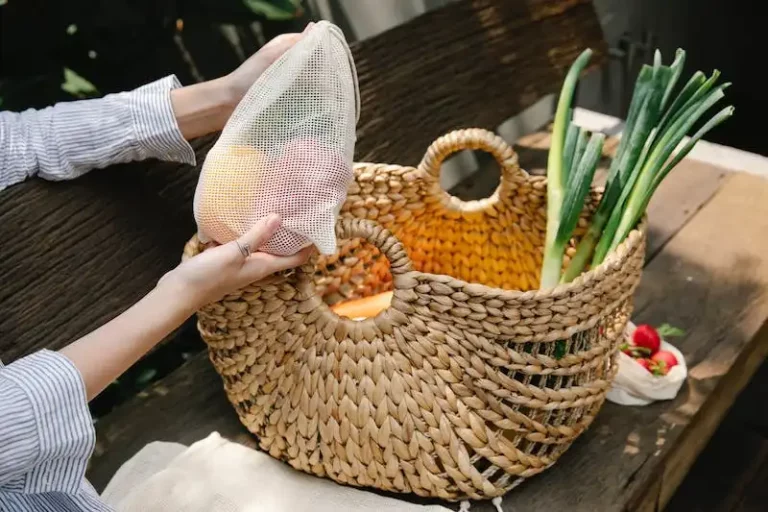In the world of gardening, there are some superstars that can cause a lot of trouble. One of the new pests that gardeners are currently dealing with in the American garden is a fruit fly. These tiny insects are not always visible to the naked eye and can be a real pain, both figuratively and literally. One of the ways to identify if your plants are infested is by looking for small trichomes, which are tiny hair-like structures on the surface of leaves and stems.
Sankaram, a garden enthusiast, asks: “What should I do if I find fruit flies in my garden?” The answer is simple: get to work on weed management. Fruit flies, like any other pest, need a certain environment to survive and multiply. They are attracted to plants that are not in good health or have weak immune systems. Therefore, if you have a weed problem, it may be wise to focus on getting rid of the weeds first.
In case you are interested in the more technical aspects of the subject, there are various subspecies of fruit flies that can be found across the American garden. Some can be more dangerous than others, both in terms of their impact on plant health and their ecological implications. Understanding the differences between these subspecies can help you ask the right questions and make better decisions about your garden.
While fruit flies are a common problem in gardens, they are not the only pest that can be a pain for gardeners. Take stinging nettles, for example. These plants are well-known for their painful stings, caused by needle-like hairs on their leaves and stems. Although the stings might not land you in the hospital, they can still be quite uncomfortable. So, if you come across stinging nettles in your garden, make sure to handle them with care.
Goldenrods, on the other hand, are not as painful as stinging nettles, but they can still cause some discomfort. These plants have a hollow stem and when touched, tiny hairs on the stem release a toxin that can cause a mild burning sensation. While the pain is usually short-lived, it is still a good idea to avoid touching these plants.
So why do we grow plants that can sting us or cause discomfort? Well, it often comes down to their other uses. Nettles, for example, can be used in cooking and have even been used for medicinal purposes. Goldenrods, despite their painful potential, are often prized for their beautiful golden flowers. So, while these plants may cause a bit of pain, there can also be a silver lining.
In conclusion, plant pest diagnostics is an important part of gardening. Whether you are dealing with fruit flies, stinging nettles, or other pests, it is important to be able to identify them and take appropriate action. Understanding the characteristics of these pests, such as trichomes or stinging hairs, can help you in this process. So, please be careful when handling plants that can sting, and make sure to consult reliable sources for proper identification and management techniques.
7 Dangerous Plants You Should Never Touch
When it comes to plants, there are some that can be truly dangerous. Whether it’s due to their toxic properties, irritating substances, or protective structures, these plants should be avoided at all costs. Here are 7 dangerous plants that you should never touch:
- Gympie Gympie: Also known as the “stinging plant,” the Gympie Gympie is covered in tiny, needle-like hairs called trichomes. These hairs are filled with a toxic substance that can cause excruciating pain for months. Even the slightest touch can result in a painful rash.
- Manchineel Tree: The Manchineel Tree might look harmless, but it is considered one of the most dangerous trees in the world. Its leaves, bark, and even its fruit contain a potent toxin that can cause severe burns and blistering upon contact with the skin. It is advised to keep a safe distance from this tree.
- Poison Ivy: Poison Ivy is a well-known plant that can cause a great deal of discomfort. The oils present on its leaves, stems, and roots can lead to an itchy rash and blisters. Avoid touching this plant and be cautious when hiking or working in areas where it grows.
- Stinging Nettles: Stinging nettles are named for a reason – their leaves and stems are covered in tiny stinging hairs that can cause irritation and a painful rash when touched. Wearing protective clothing is essential when dealing with these plants.
- Acacia Tree: Acacia trees are common in many parts of the world, but some species produce toxins in their leaves and foliage that can be harmful. Be cautious when handling these trees as their defense mechanisms can cause skin irritation.
- Devil’s Breath: Also known as “scopolamine,” Devil’s Breath is a plant native to South America. Its flowers and seeds contain a powerful drug that can cause hallucinations and memory loss. Touching or ingesting any part of this plant can have serious consequences.
- Asters: While asters are beautiful flowers commonly found in gardens, some species have a hollow stem that can deliver a painful sting. Be aware of the specific type of aster you are dealing with to avoid any unpleasant surprises.
Remember, it’s always better to err on the side of caution when it comes to plants. Avoid touching any plant if you are unsure of its safety or have any questions about its toxicity or irritability. It’s also important to keep in mind that allergies and sensitivities can vary from person to person, so it’s best to exercise caution when in doubt.
Manchineel
Manchineel, also known as the “tree of death,” is a plant that can mean danger for anyone who comes across it. This dangerous plant is native to coastal areas of the Caribbean and Central America.
The manchineel tree is thin and hairy, with hair-like leaves that might look harmless at first glance. However, touching this plant can be extremely painful and dangerous. In fact, the manchineel is considered to be one of the most toxic trees in the world.
Similar to other stinging plants like the giant hogweed and tread-softly nettles, the manchineel tree is equipped with means to protect itself. Its leaves, stems, and fruits contain a toxic sap that can cause severe skin reactions, blindness if it comes into contact with the eyes, and even death if ingested.
When the manchineel tree is chopped down or burned, the smoke can also be toxic and cause irritation to the skin, eyes, and respiratory system. Therefore, it is never recommended to burn or compost manchineel wood.
In addition to its dangerous properties, the manchineel tree also has historical and ecological significance. It was sometimes used by European explorers for torture, and it is believed to have been used to make poisoned arrows. However, today it is mostly avoided due to its dangerous nature.
Identifying the manchineel tree can be challenging due to discrepancies in the scientific literature. There are various subspecies of manchineel trees, each with slightly different characteristics. Generally, manchineel trees are medium to large in height and have a bushy appearance. Their leaves are green and shiny, and their fruits resemble small apples.
In conclusion, the manchineel is a dangerous and toxic plant that should be avoided at all costs. Its toxic sap and fumes can cause severe pain and health complications. If you ever come across a manchineel tree, please do not touch or interact with it. It is always better to stay safe and appreciate these superstars of the plant kingdom from a distance.
| Common Names | Scientific Name |
|---|---|
| Manchineel | Hippomane mancinella |
| Nettle | Urtica |
| Gympie Gympie | Dendrocnide moroides |
| Stinging Nettle | Urtica dioica |
| Tread-softly | Solanum ptycanthum |
| European Nettle | Urtica dioica |
Poison Ivy
Poison Ivy, also known by its scientific name Toxicodendron radicans, is a plant that is widely recognized for causing allergic reactions. It is a member of the Anacardiaceae family and is native to North America. Poison Ivy is a perennial plant that can be found in various habitats such as forests, fields, and gardens. It can grow as a vine or a shrub and typically reaches a height of 1 to 3 feet. The leaves of Poison Ivy have a characteristic three-leaflet pattern, with each leaflet having a pointed tip. The stems of the plant are covered with fine hairs, which means that touching any part of the plant might result in a painful reaction.
One of the main topics of concern for gardeners is the identification of Poison Ivy. It can often be confused with other plants such as poison oak and poison sumac, which are also known for their toxic effects. To properly identify Poison Ivy, one should look for the following features:
- Leaves: Poison Ivy has three leaflets with a glossy appearance. The leaflets can vary in size and may have smooth or toothed edges.
- Fruit: Poison Ivy produces small green or off-white berries that are typically not consumed by birds.
- Stems: The stems of Poison Ivy are usually hairy and can be either brown or reddish in color.
The leaves, stems, and fruit of Poison Ivy contain an oily resin called urushiol, which is responsible for the allergic reaction. When in contact with the skin, urushiol can cause itching, redness, and the formation of blisters. It is important to note that not all people are allergic to Poison Ivy, but for those who are, even a slight touch can lead to a severe reaction.
If you come in contact with Poison Ivy or suspect that you have been exposed to it, there are several measures you can take to minimize the reaction:
- Wash the affected area with soap and cold water as soon as possible to remove the urushiol oil.
- Avoid scratching the affected area, as this can lead to further irritation and the spread of the oil.
- Apply calamine lotion or an over-the-counter hydrocortisone cream to help relieve itching and inflammation.
- If the reaction is severe or covers a large area of your body, seek medical attention.
In addition to Poison Ivy, there are several other plants that can cause similar allergic reactions. Some examples include stinging nettles, giant hogweed, and the manchineel tree. These plants contain different compounds, such as trichomes or sap, that can irritate the skin upon contact. It is important to be cautious and knowledgeable about these plants, especially when they are present in your garden or outdoor environment.
Overall, Poison Ivy is a plant that should be treated with caution. Its ability to cause allergic reactions and the persistence of its urushiol oil make it a potentially dangerous plant to encounter. Gardeners and outdoor enthusiasts should be aware of Poison Ivy and other similar plants, taking necessary precautions to avoid contact and minimize the risk of an allergic reaction.



